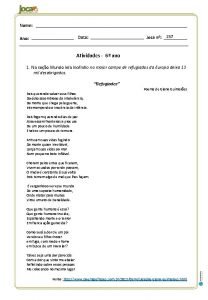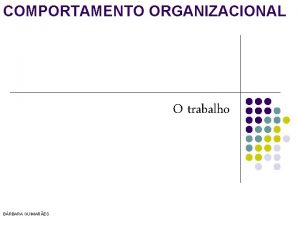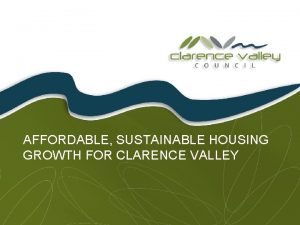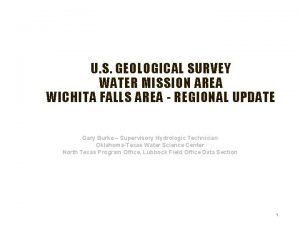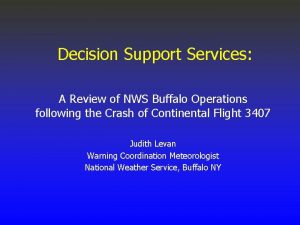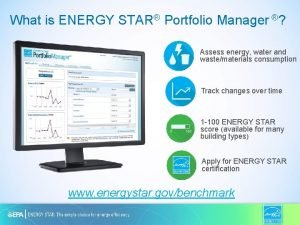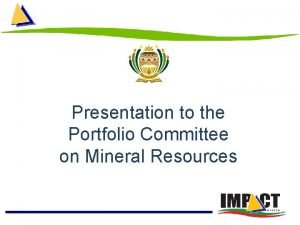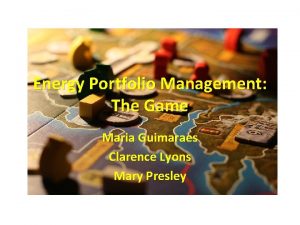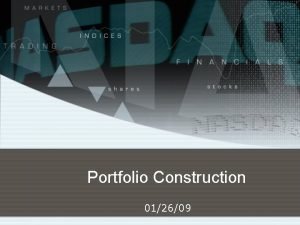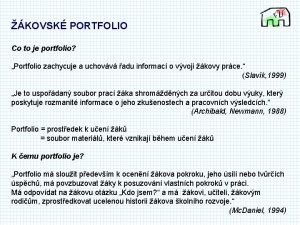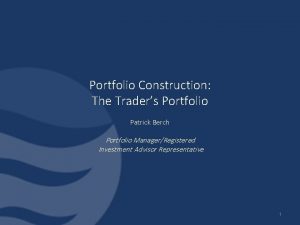Energy Portfolio Management The Game Maria Guimaraes Clarence
















































- Slides: 48

Energy Portfolio Management: The Game Maria Guimaraes Clarence Lyons Mary Presley

Presentation Guide • • Introduction Decision Making Criteria for Utilities EPM: The Game!! Game Wrap-up

Three Key Aspects of EPRI Independent Objective, scientifically based results address reliability, efficiency, affordability, health, safety and the environment Independent Nonprofit Chartered to serve the public benefit Collaborative Bring together scientists, engineers, academic researchers, industry experts Nonprofit Collaborative

Our Members… • 450+ participants in more than 30 countries • EPRI members generate approximately 90% of the electricity in the United States • International funding of nearly 25% of EPRI’s research, development and demonstrations

Who We Are • Ph. D. Civil Engineering Maria Guimaraes • EPRI Nuclear Sector • Aging of nuclear energy infrastructure Clarence Lyons • M. B. A. ; B. S. Chemical Engineering • EPRI Environment and Renewables Sector • Economics & Technology Assessment of Renewables Mary Presley • M. S. , B. S. Nuclear Engineering; B. S. American Studies • EPRI Nuclear Sector • Risk and Safety Management

Introduction So many technologies, how do we choose?

Geothermal

Hydro

Coal (with or without CO 2 Capture)

Natural Gas

Solar

Wind

Nuclear

Decision Making Criteria Cost Non-fuel Resource Needs Waste Generation constraints

Economics/Cost • Capital Cost – Large, fixed one-time costs to build the plant, for example: • • Purchase of the land upon which the plant is built Permits and legal costs Equipment needed to run the plant Costs involving the construction of the plant ) r( So la CS r( PV P) d la So e or Of fsh e W W in in d al m On sh or s as ot he r Ge om ar Bi cle CC 0 Nu Solar NG Hydro Wind Geo 50 CC Nuc 100 IG NG 150 al coal 200 Co • Energy demand less than anticipated • Political climate • Cost of opportunity Capital Cost ($/k. W-yr) – Requires payment upfront or credit (financing) – Risks 250

Economics/Cost • Operation & Maintenance Costs – Fixed • independent of the number of hours of operation or amount of electricity produced • operating labor, maintenance labor and equipment costs, etc. – Variable • costs tied directly to power production (e. g. , fuel consumption) • Risk: fuel prices dependent on supply availability and political climate coal NG Nuc Hydro Wind Geo Solar

Land Use • The land required for continued plant operation – fuel supply and electricity generation – Mining operations – Waste storage (coal ash) – Direct vs. Total Land Use • Dual-purpose applications (co-existence) – Roof-top solar – Agriculture and wind farms coal NG Nuc Hydro Wind Geo Solar

Land Use Area required for nuclear plant Area required for an energy-equivalent wind farm Land Use

Water Requirements • Water used for operations – Cooling water for equipment – Water to clean PV modules coal NG Nuc Hydro Wind Geo Solar

CO 2 Emissions coal NG Nuc Hydro Wind Geo Solar

Environmental Impacts – Waste products coal NG Nuc Hydro Wind Geo Solar www. acaa. usa. or g

Balancing Demand with Supply • Energy storage is very inefficient with current technology • Electricity use is highly variable – Time of day – Season evening • Availability – Is the power source always available when needed? • Limited by natural phenomena (e. g. , wind, sun) • Time for maintenance and refueling • Flexibility US Energy Information Administration, August 27, 2013 www. eia. gov Seasonal Energy Demand in US: Billion kilowatthours Winter Summer Spring Fall Winter – Is the amount of power variable according to the need? US Energy Information Administration, August 27, 2013 www. eia. gov

Decision Making Criteria Cost Non-fuel Resource Needs Waste Generation constraints Other Criteria? – – Political/cultural sensitivity Availability of fuel & “Energy Independence” Transmission distance “Not in my backyard”

Now it’s your turn to be the Decision Maker… • You are the engineers that support the Regional Development Commission. You are in charge of providing a recommendation on what plant(s) your region should build to meet its projected energy need of 2000 MW • Each team is assigned a region or country • Use the information in the Country Description to identify your constraints • Use the Energy Cards for more information on each power source • Fill out the Energy Table with your final solution • Prepare your presentation • Members of the Regional Development Commission (i. e. , us) will periodically stop by to assess your process and provide additional inputs

Go!

Be prepared to present to the class: Ø Your country constraints Ø Your final solution Ø Based on the mix, do you anticipate the total energy cost to be high, medium or low? Ø Did your solution change in the process? How? Ø One key learning You have 4 minutes for the presentation

Country 1 You are a densely populated island nation with a strong technology-based economy. You have a semi-tropical climate, with plenty of rainfall during the year. Days are usually sunny and evenings are generally windy on the south side of the island. There is a mountain range on the east side of the island. While the island is very densely populated, the culture has a long tradition of honoring and appreciating nature. Therefore, the people are sensitive to environmental issues, particularly air quality, and have voted in a law that requires 20% of the energy to be produced from non-CO 2 emitters. The country has little to no natural supply of coal and natural gas. The island is in a seismically active region with geothermal resources.

Country 2 You are a large arid region with a densely populated city surrounded by expansive, unpopulated high desert. The region is very sunny, with little cloud cover during the day, but high winds and dust storms at night. Your region has a strong economy that attracts large research laboratories and retirees due to the cheap land, cheap cost of living and the warm, dry climate. Culturally, the people are industrious and value innovation, education and technological and economic advancement. 10% of the power needs are anticipated to be met through individual generation (i. e. , solar panels on residential rooftops). The region has little to no natural supply of coal and natural gas, and no geothermal resources.

Country 3 Your country is booming! The well-populated county has an unemployment rate less than 5% because there are so many opportunities here. Sky-scrapers, apartment complexes, and manufacturing facilities are going up quickly. The people in the city are enjoying the developing economy and enjoy being on the world’s stage! Fueling this new economy, is a little bit of a challenge. The region is rich in natural resources, like coal, but not much in natural gas. The Southern coast, Northern and interior parts of the country have excellent wind resources. However, not many people live in the interior or Northern parts of the country so expensive transmission lines need to be built to move the power to more populated areas. The country’s leaders and citizens want to been seen as good stewards of the environment so they would like to incorporate clean energy when its possible, but also want to fuel their economy with a local fuel supply. Since the country is developing they do not have a lot of capital to spend on the energy infrastructure. They are looking for ways to get the biggest bang for their buck! The climate in the area is warm year round – very tropical. You have little to no geothermal resources but have good water and land availability.

Country 4 This island country is about the size of Kentucky. There is not a huge population, less than 500, 000. That’s probably due to the glaciers and snow that cover 15% of the island. The country is also prone to volcanic activity which gives the country several geysers which are popular swimming spots. Most of the citizens live in only 7% of the country. Be note mistaken, this country is small but it boasts a very strong economy that is developed and thriving. The country has a strong mining economy, with coal as a major export. Even though the country exports coal, the citizens are particularly happy and proud of the country’s dedication to fight global warming. They are not fans of nuclear energy either. The weather here is limited - they have two seasons: winter and summer. The high in the summer is 87 o. F, average about 77 o. F. The low in the winter is -22 o. F, averaging 32 o. F. The country does not get much sun, but wind is a resource that is plentiful. Water availability is good in the country as well.

Country 5 Your region is a moderately densely populated island that is part of a chain of islands. You have a strong tourism-based economy. You have a tropical climate, with plenty of rainfall during the year. The island is relatively flat, with one peak on the north side of the island. Days are usually sunny, with some cloud cover and evenings are generally windy on the south side of the island. A recent survey of hydro resources show that there is only 500 MW max available. The culture has a long tradition of honoring and appreciating nature, and the tourism-based economy thrives based on the natural beauty of the island. It is important, then, to the people and the economy to preserve that natural beauty. Due to the relatively small size of the island its geographic isolation, the population is very anti-nuclear due to fear that evacuation would be difficult in the case of an emergency. The country has little to no natural supply of coal and natural gas. The island is in a seismically active region with geothermal resources.

Country 6 You are a medium-sized, moderately populated, well-established nation. Your citizens are very conscientious, politically active, forward-thinking and technology oriented. You have a strong technology and manufacturing-based economy, and you consistently rank in the top 5 countries in the world by GDP. While the economy is strong, to keep the manufacturing sector competitive on a global market, commercial energy prices must remain moderately low. Your country is a mix of beautiful countrysides as well as large cities. The majority of the population is centered in the southwest, with a few cities scattered across the north and southeast. Overall, the country is moderately sunny. The western portion of the country is temperate in climate, with mild winters and summers. The eastern portion of the country tends to get more extreme temperatures, with heavy snowfall in the winter. Generally there is moderate precipitation year-long, but in the remote mountain areas there can be heavier rainfall. This translates to little hydroelectric resources near population and manufacturing centers. Humid westerly winds predominate the majority of the country, blowing sporadically day and night. The country has a large supply of lignite, a heavy, low quality coal (“brown coal”) in the north. Lignite is too heavy to economically transport very far. However, there are rich sources of bituminous coal in the south. There is little to no natural supply of natural gas in your country, but neighboring countries have natural gas available for trade. There are no geothermal resources available in your country.

Discussion • Country Description • Final Generation Mix/Portfolio • Step Change • How did your Step Change alter your Generation Mix/Portfolio? • 1 Take-away

Final Results Energy Source Coal Natural Gas Nuclear Hydro Wind Geothermal Solar (PV) Total (MW) Country 1 Country 2 Country 3 Country 4 Country 5 Country 6

WRAP-UP


Electricity Prices (¢/k. Wh) Average prices from 2011 converted at mean exchange rates. Sources: IEA, EIA, national electricity boards, OANDA

Japan’s Electricity Mix $0. 20/k. Wh $0. 26/k. Wh

Germany’s Electricity Mix Who is most impacted by rate increases?

THE END

Country 1 THINGS HAPPEN!!! - There is a large earthquake in the Pacific causing damage to the nuclear plants at a neighboring country causing radiation to be released. - Some portion of your population is now concerned about nuclear energy. As a committee you need to decide if this will change your decision on an energy mix. What would it mean for your country if this change happened after your initial plan was implemented? How would that have affected the cost of energy in your country? Does this affect your design? If so, how will you change the energy mix?

Country 2 THINGS HAPPEN!!! - Your region is booming! Your energy needs are twice what we initially estimated. - Your country needs to remain competitive or you will loose business to neighboring regions. What would it mean for your country if this change happened after your initial plan was implemented? How would that have affected the cost of energy in your country? Does this affect your design? If so, how will you change the energy mix?

Country 3 THINGS HAPPEN!!! - To build global good will, your country is about to sign an international agreement to reduce CO 2 emissions. - In this agreement, your country commits to at least 20% of energy generation to be CO 2 free. What would it mean for your country if this change happened after your initial plan was implemented? How would that have affected the cost of energy in your country? Does this affect your design? If so, how will you change the energy mix?

Country 4 THINGS HAPPEN!!! - There is a significant increase in population, your energy demand goes up by 10% and there is less available land. - Tests reveal that geothermal resources are less than anticipated. What would it mean for your country if this change happened after your initial plan was implemented? How would that have affected the cost of energy in your country? Does this affect your design? If so, how will you change the energy mix?

Country 5 THINGS HAPPEN!!! - War internationally! Imported natural gas prices go up (double) - Although this island is small, people are flocking to it! There is a 10% population increase, making the land resources even more valuable and energy needs increase by 10% What would it mean for your country if this change happened after your initial plan was implemented? How would that have affected the cost of energy in your country? Does this affect your design? If so, how will you change the energy mix?

THINGS HAPPEN!!! Country 6 - The political winds have shifted and the country has decided try to reach 50% CO 2 free generation - There is a large earthquake in the Pacific causing damage to the nuclear plants at a neighboring country causing radiation to be released. The government has implemented a no-new nuclear plant policy. What would it mean for your country if this change happened after your initial plan was implemented? How would that have affected the cost of energy in your country? Does this affect your design? If so, how will you change the energy mix?

Nuclear Power 1000 MW Natural gas 330 MW Coal Generation 500 MW Hydroelectric Power 200 MW Construction Cost Electricity Cost Land use Water requirement CO 2 emissions Waste products Availability Flexibility

Solar Photovoltaic 10 MW Wind energy (wind farms) 200 MW Geothermal Energy 50 MW Construction Cost Electricity Cost Land use Water requirement CO 2 emissions Waste products Availability Flexibility
 Giano guimarães
Giano guimarães Ucc arnaldo sampaio
Ucc arnaldo sampaio Barbara guimaraes
Barbara guimaraes Barbara guimaraes
Barbara guimaraes Clarence soccer house league
Clarence soccer house league Earl gideon
Earl gideon Confessions of a public defender
Confessions of a public defender Clarence cleary
Clarence cleary Segment routing ipv6
Segment routing ipv6 Clarence valley lep
Clarence valley lep Clarence w. rowley
Clarence w. rowley Clarence synard
Clarence synard Clarence perry
Clarence perry Extti
Extti Clarence king
Clarence king Clarence middle school
Clarence middle school 91079101
91079101 Clarence bass
Clarence bass Wfo buffalo
Wfo buffalo Portfolio management game
Portfolio management game Mission statement as a student
Mission statement as a student Energy energy transfer and general energy analysis
Energy energy transfer and general energy analysis Energy energy transfer and general energy analysis
Energy energy transfer and general energy analysis Maria felicia de jesús sacramentado maría teresa arminda
Maria felicia de jesús sacramentado maría teresa arminda Energy star portfolio manager
Energy star portfolio manager Portfolio committee on mineral resources and energy
Portfolio committee on mineral resources and energy Hát kết hợp bộ gõ cơ thể
Hát kết hợp bộ gõ cơ thể Ng-html
Ng-html Bổ thể
Bổ thể Tỉ lệ cơ thể trẻ em
Tỉ lệ cơ thể trẻ em Gấu đi như thế nào
Gấu đi như thế nào Tư thế worm breton
Tư thế worm breton Bài hát chúa yêu trần thế alleluia
Bài hát chúa yêu trần thế alleluia Các môn thể thao bắt đầu bằng tiếng chạy
Các môn thể thao bắt đầu bằng tiếng chạy Thế nào là hệ số cao nhất
Thế nào là hệ số cao nhất Các châu lục và đại dương trên thế giới
Các châu lục và đại dương trên thế giới Công thức tiính động năng
Công thức tiính động năng Trời xanh đây là của chúng ta thể thơ
Trời xanh đây là của chúng ta thể thơ Mật thư anh em như thể tay chân
Mật thư anh em như thể tay chân Phép trừ bù
Phép trừ bù Phản ứng thế ankan
Phản ứng thế ankan Các châu lục và đại dương trên thế giới
Các châu lục và đại dương trên thế giới Thể thơ truyền thống
Thể thơ truyền thống Quá trình desamine hóa có thể tạo ra
Quá trình desamine hóa có thể tạo ra Một số thể thơ truyền thống
Một số thể thơ truyền thống Cái miệng xinh xinh thế chỉ nói điều hay thôi
Cái miệng xinh xinh thế chỉ nói điều hay thôi Vẽ hình chiếu vuông góc của vật thể sau
Vẽ hình chiếu vuông góc của vật thể sau Biện pháp chống mỏi cơ
Biện pháp chống mỏi cơ đặc điểm cơ thể của người tối cổ
đặc điểm cơ thể của người tối cổ
